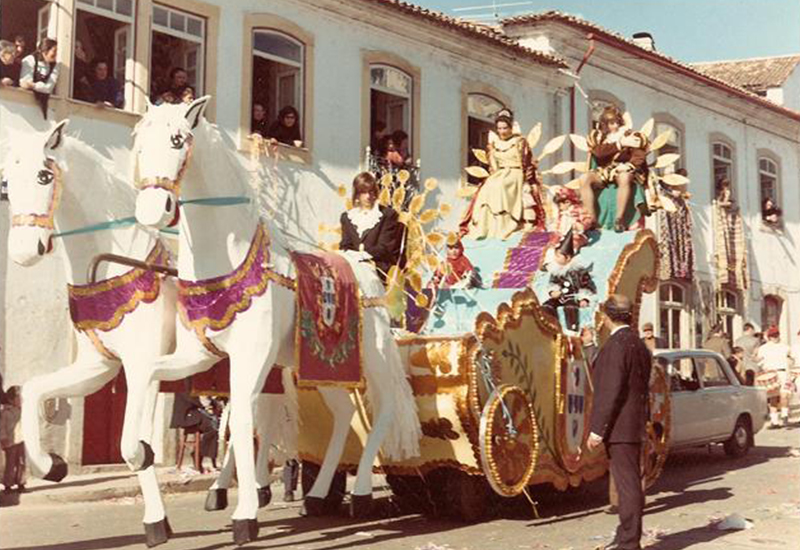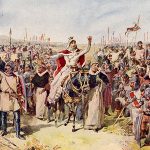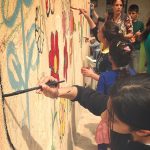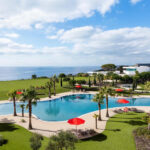In the words of the Trinbagonian singer Destra Garcia, “It’s carnival!”
It’s that time of year again when towns and villages across the country will burst out in colour, filled with fun, frolics, and flamboyant costumes to celebrate carnaval.
First celebrated by Italian Catholics before the start of Lent, the tradition of carnaval soon grew in popularity, spreading across Europe, notably in France, Spain and here in Portugal. As Lent was the period when Catholics would not eat meat, the festival gained the name carnevale – loosely translating to “put away the meat”. It was seen as the last bid to eat, drink and be merry before temporarily giving up all things enjoyable until Easter Day.
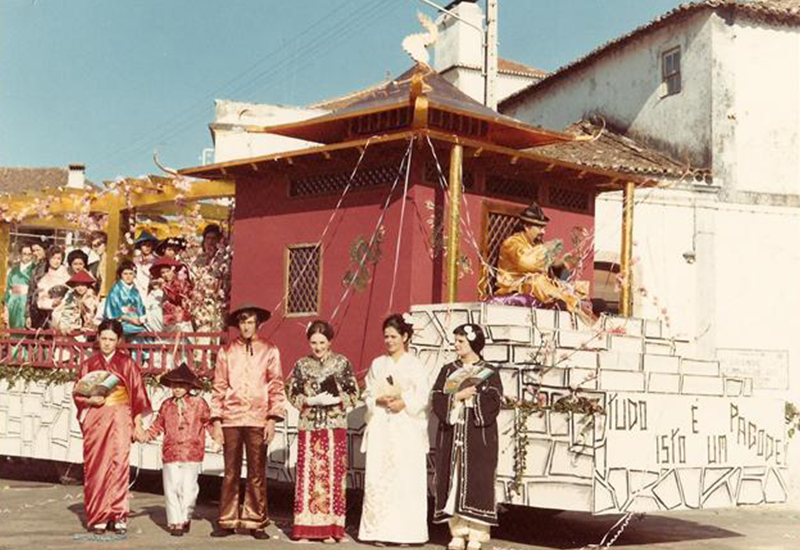
Across Portugal, many towns and villages will host their very own carnaval parades between 10–14 February, preserving this centuries-old tradition. Whilst many often associate Brazil with carnaval, it was Portuguese immigrants from the islands of Açores, Madeira and Cabo Verde who introduced the entrudo (a time for mockery) to the former Portuguese colony before it became the carnaval which we know today.
Among the many festivities that will take place over the fun-filled long weekend, there are a few towns up and down the country that have put their mark on the colourful annual event.
Ovar
The Carnaval de Ovar is one of the biggest in the country. It is thought to date back to the late 19th century, growing in popularity until it hit its peak in the 1950s. Between the vibrant costumes, confetti and wacky floats, one can see the “dirty battle” between groups of friends, who throw eggs, flour, glitter and even paint at each other, causing light-hearted mayhem stemming from the ancient entrudo traditions.
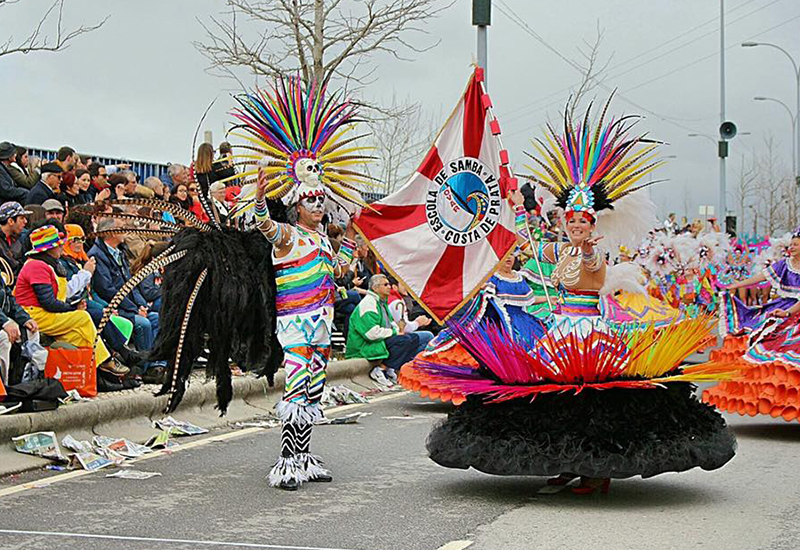
Over the years, various neighbourhoods in and around the Ovar area have joined in with the fun, each contributing to making Ovar one of Portugal’s most beloved carnavals. The first samba school was founded in the city in 1983 and incorporated into the carnaval, bringing a contemporary, tropical vibe to the festival, which welcomes large volumes of tourists all year round.
While not one of the biggest carnavals, Torres Vedras has become a popular favourite due to quite an unusual twist. Having annually celebrated carnaval since the latter part of the 19th century, the first Carnaval Commission was founded in Torres Vedras in 1912. Eleven years later, the town saw its first float and the crowning of the carnaval king and queen, who rode the procession on a donkey. However, it was in 1928 when everything changed and the matrafonas joined in the parades, bringing a new and slightly bizarre concept to carnaval.
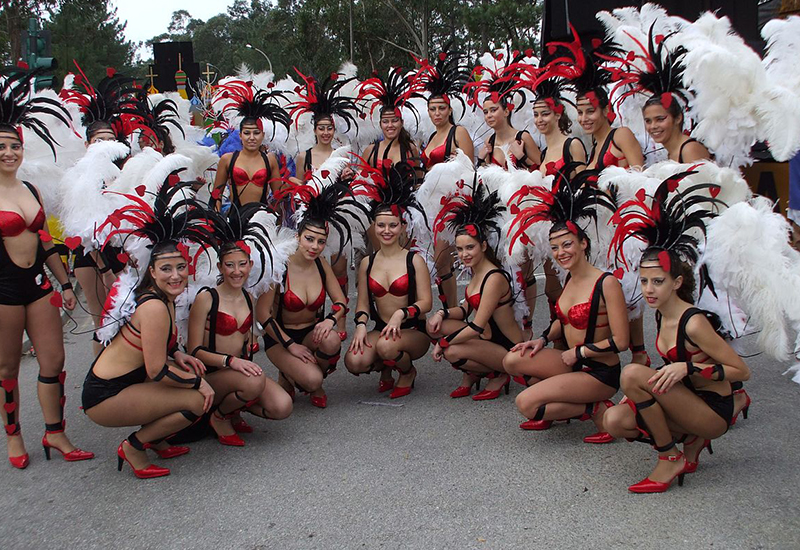
As crowds flocked to cheer on the parade, the village men began to look for a disguise to join in the celebrations unnoticed. A typical dinner suit was deemed too formal for such an extravagant event and so the men decided to delve into their feminine side and dress up as women, somewhat akin to drag. Known as the matrafonas, the men of Torres Vedras have continued this tradition for the past 94 years and have become a favourite part of the Torres Vedras Carnaval. From flowing elegant ball gowns to suggestive workwear attire, crushing their feet into stiletto heels and smothering themselves with make-up, the men take pride in their attempt at drag, often competing for the best costume.
Soon the women joined in with this gender-bending tradition by dressing up as stereotypical men. Wearing oversized suits, with stubble and thickly drawn moustaches, some even smoking pipes and wearing flat caps to caricature country folk, the women’s tongue-in-cheek depiction of men competes with the men’s drag. The matrafonas have truly put Torres Vedras Carnaval on the map as one of the most unusual, despite it being copied in various other parades.
Monchique
Further out of town, smaller communities also come together to make their very own village carnavas. Supported by local schools, organisations and businesses, these small carnavals are equally as crazy, if not as grand as their city counterparts.
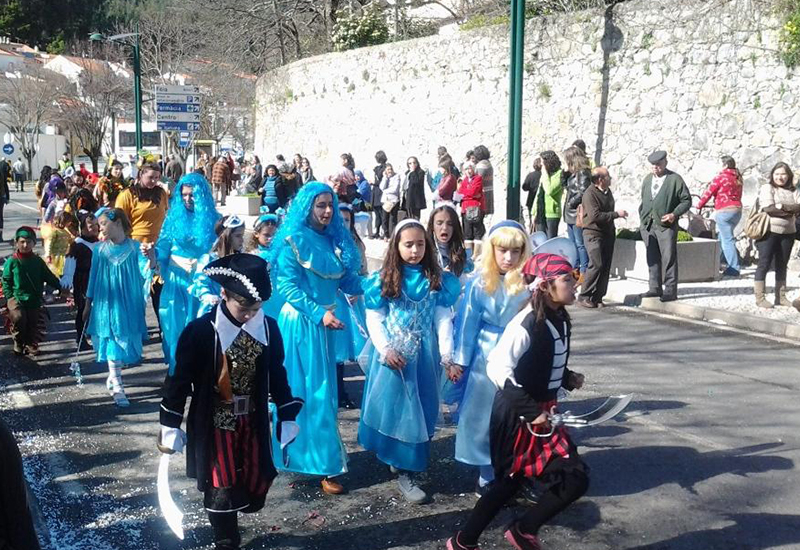
The carnaval in Monchique is a prime example of a rural community coming together to let their hair down. Schools and organisations gather together to showcase a new theme, often highlighting social issues such as nature preservation and recycling. The parade tours the windy roads of Monchique, squeezing through narrow alleyways which are barely wide enough for the floats to pass through. Watching the parade making its way down the very steep and narrow Rua do Porto Fundo, which has a set of steps down its middle,is entertaining in itself as onlookers applaud the hard work of the local children and their families who have spent weeks preparing their costumes.
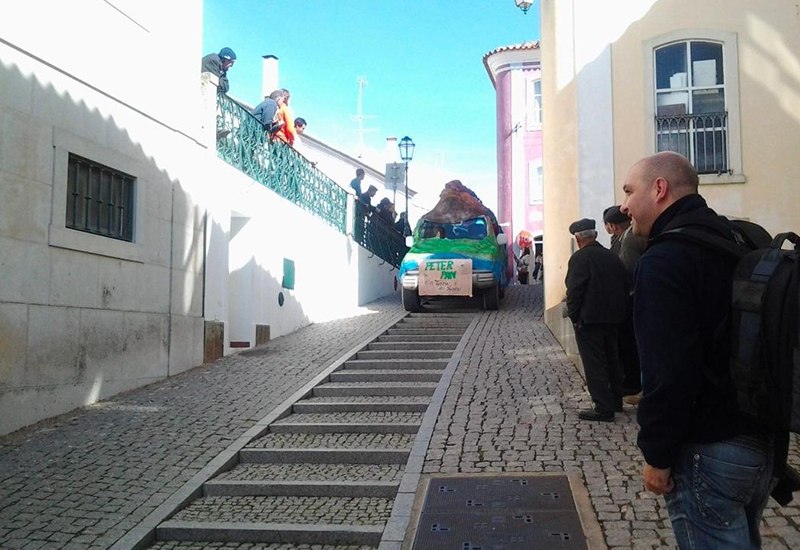
A good friend of mine, Joanna, works with young people in the area and she told me carnaval is one of her favourite festivals. She explained how she loves the costumes, the atmosphere and, of course, how the community comes together to be “a little silly”. Like many, she has been involved in the local carnaval on and off over the years, watching it develop as trends change.
Creating a new costume each year is all part of the fun for Joanna. “It’s like a competition to be better than the year before,” she told me excitedly. While the theme for this year may still be under wraps, carnaval goers will likely flock to see the colourful creations that others have worked so hard to make.
Alte
The rustic town of Alte may seem picturesque and somewhat quiet most of the year, but during carnaval, the streets come to life with one of the most risqué carnavals in the Algarve. Filled with suggestive costumes and innuendos, Alte brings a different sense to carnaval in this community parade.
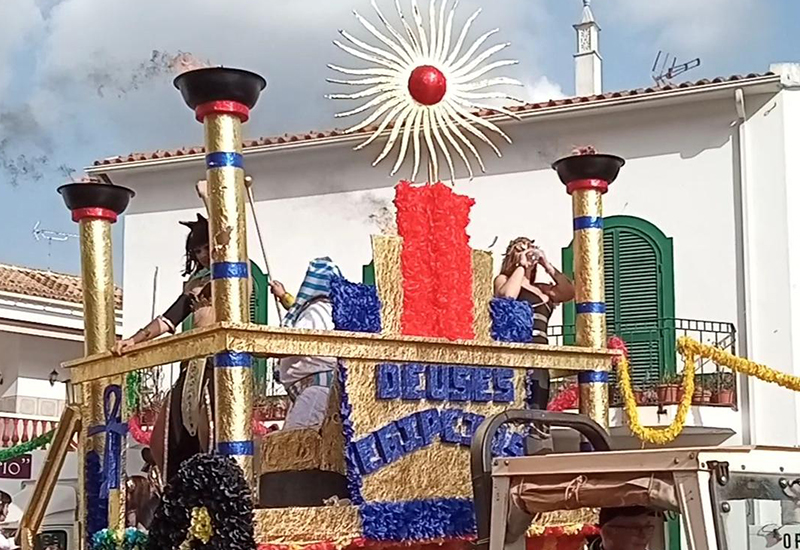
With participation by local organisations and tradespeople, carnaval time in Alte brings out the best of this little town, attracting thousands from across the Algarve and afar. Branded as “the most traditional carnaval in the Algarve”, revellers are known to mockingly pay homage to all things stereotypically Algarvian. Youngsters dressed as farmers with chickens flying all over the float and a horse dressed as “Barbie” are just two examples from previous years, with others too risqué for an innocent like me to mention.
What will appear in Carnaval de Alte this year remains top secret until the gates open on 10 February and if you look closely, you might just see yours truly there, dancing away with a beer in hand.
Loulé
Closer to home, the Algarve offers some of the most notable carnaval parades in the country. Loulé, arguably the most famous carnival in the region, is famed for its Brazilian dancers, ornately dressed in minimalist costumes that don’t leave much to the imagination.
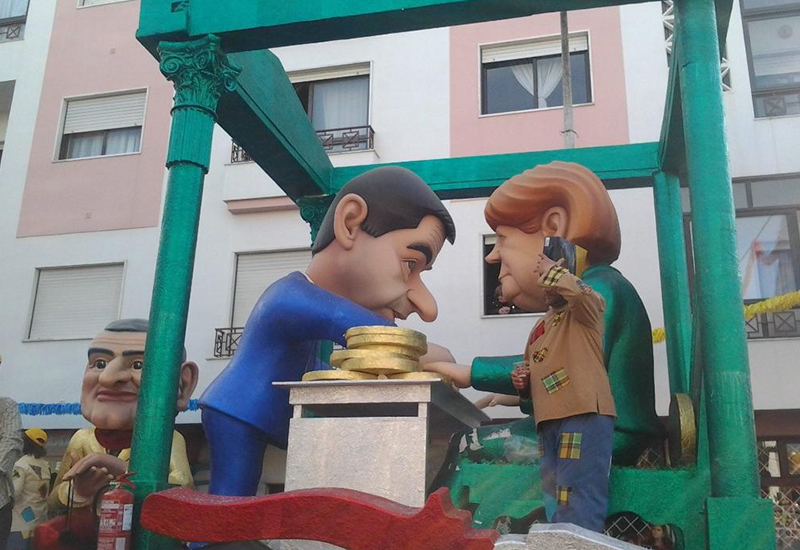
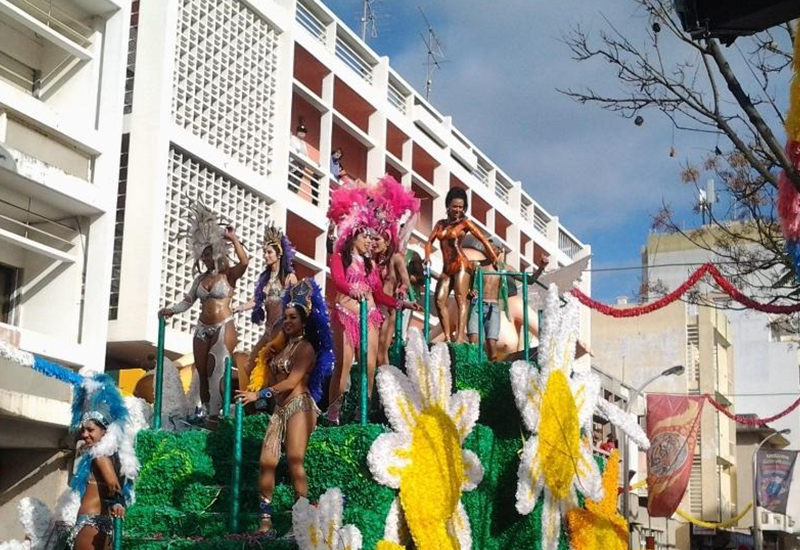
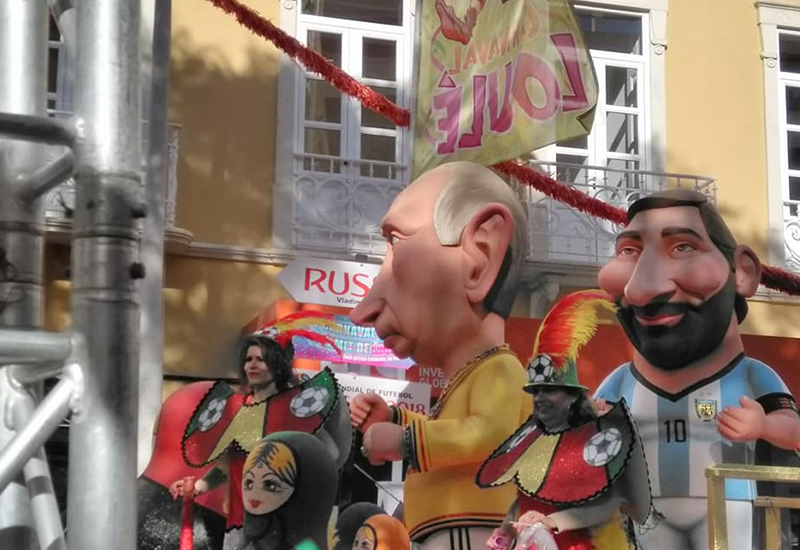
As one of the oldest carnavals in the country, the parade welcomes as many as 100,000 visitors annually, with annual preparations starting as soon as the last carnaval has finished. One of the highlights of Loulé Carnaval is the caricature statues of world leaders, often appearing in somewhat suggestive poses, mocking political campaigns and social issues and giving onlookers a good laugh at situations that wouldn’t look out of place in a late-night comedy sketch.This year the event will take place from 11-13 February.
The Burial of Shrovetide
The Enterro do Entrudo, or the “burial of shrovetide” is an ancient pagan tradition representing the end of carnaval. The historic sacrifice was almost lost in time until 33 years ago when it was reintroduced to mark the end of Quarteira’s carnaval.
An effigy of a fictitious deceased person representing carnaval is paraded around the town in a mock funeral procession followed by a priest, marching band and, of course, the people, bidding farewell to the deceased or carnaval effigy and welcoming the start of Lent. As the parade weaves its way around the streets of Quarteira, starting at Rua da Alegria, onlookers follow the procession, bashing pots and pans, rattles and tambourines, as young men shout out, “Oh my Shrovetide, Donkey Head, You stole my Chicha and left me my Bones!” At one time, youngsters would throw flour at curious onlookers and mock the irritable old men of the town, taking advantage of the fact that “no one gets offended” during carnaval.
The first parade of this kind was recorded by Dom Afonso III in 1252. It is believed that the word entrudo derives from the Latin introitu, meaning “the beginning”. This is interpreted as the beginning of Christian Lent and the beginning of a new agrarian cycle in pagan belief.
The Enterro do Entrudo finishes at the beach of Praça do Mar, where the effigy is ceremoniously “burnt” in a pyrotechnic display as the priest reads the pretend Last Will & Testament to much raucous behaviour and mockery from the crowd, finally putting an end to the effigy and the end to carnaval, at least for another year.
